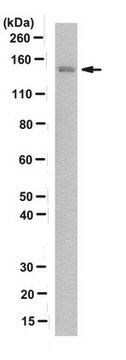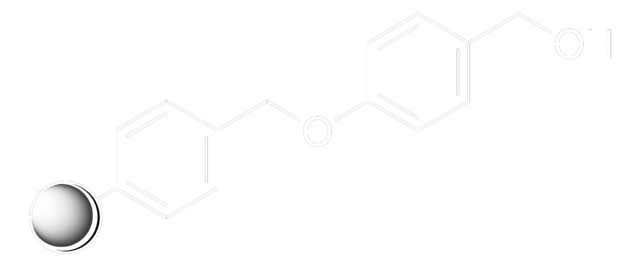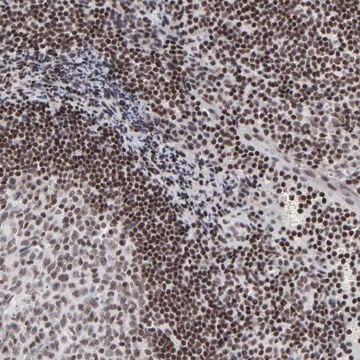Kluczowe dokumenty
B1310
Anti-BACH1 antibody produced in rabbit
affinity isolated antibody, buffered aqueous solution
Synonim(y):
Anti-BRCA1-associated C-terminal helicase 1
About This Item
Polecane produkty
pochodzenie biologiczne
rabbit
białko sprzężone
unconjugated
forma przeciwciała
affinity isolated antibody
rodzaj przeciwciała
primary antibodies
klon
polyclonal
Formularz
buffered aqueous solution
masa cząsteczkowa
antigen ~150 kDa
reaktywność gatunkowa
human
metody
immunoprecipitation (IP): 5-10 μg using RIPA extract (0.5 mg) of human HeLa cells
indirect immunofluorescence: 10-20 μg/mL using human MCF-7 cells
microarray: suitable
western blot: 0.5-1.0 μg/mL using whole extracts of MCF-7 human breast carcinoma cells
numer dostępu UniProt
Warunki transportu
dry ice
temp. przechowywania
−20°C
docelowa modyfikacja potranslacyjna
unmodified
informacje o genach
human ... BRIP1(83990)
mouse ... Brip1(237911)
rat ... Brip1(360588)
Opis ogólny
Immunogen
Zastosowanie
- immunoblottingu
- immunohistochemia
- western blotting
Działania biochem./fizjol.
Opis wartości docelowych
Postać fizyczna
Oświadczenie o zrzeczeniu się odpowiedzialności
Nie możesz znaleźć właściwego produktu?
Wypróbuj nasz Narzędzie selektora produktów.
Kod klasy składowania
10 - Combustible liquids
Temperatura zapłonu (°F)
Not applicable
Temperatura zapłonu (°C)
Not applicable
Środki ochrony indywidualnej
Eyeshields, Gloves, multi-purpose combination respirator cartridge (US)
Wybierz jedną z najnowszych wersji:
Masz już ten produkt?
Dokumenty związane z niedawno zakupionymi produktami zostały zamieszczone w Bibliotece dokumentów.
Nasz zespół naukowców ma doświadczenie we wszystkich obszarach badań, w tym w naukach przyrodniczych, materiałoznawstwie, syntezie chemicznej, chromatografii, analityce i wielu innych dziedzinach.
Skontaktuj się z zespołem ds. pomocy technicznej








